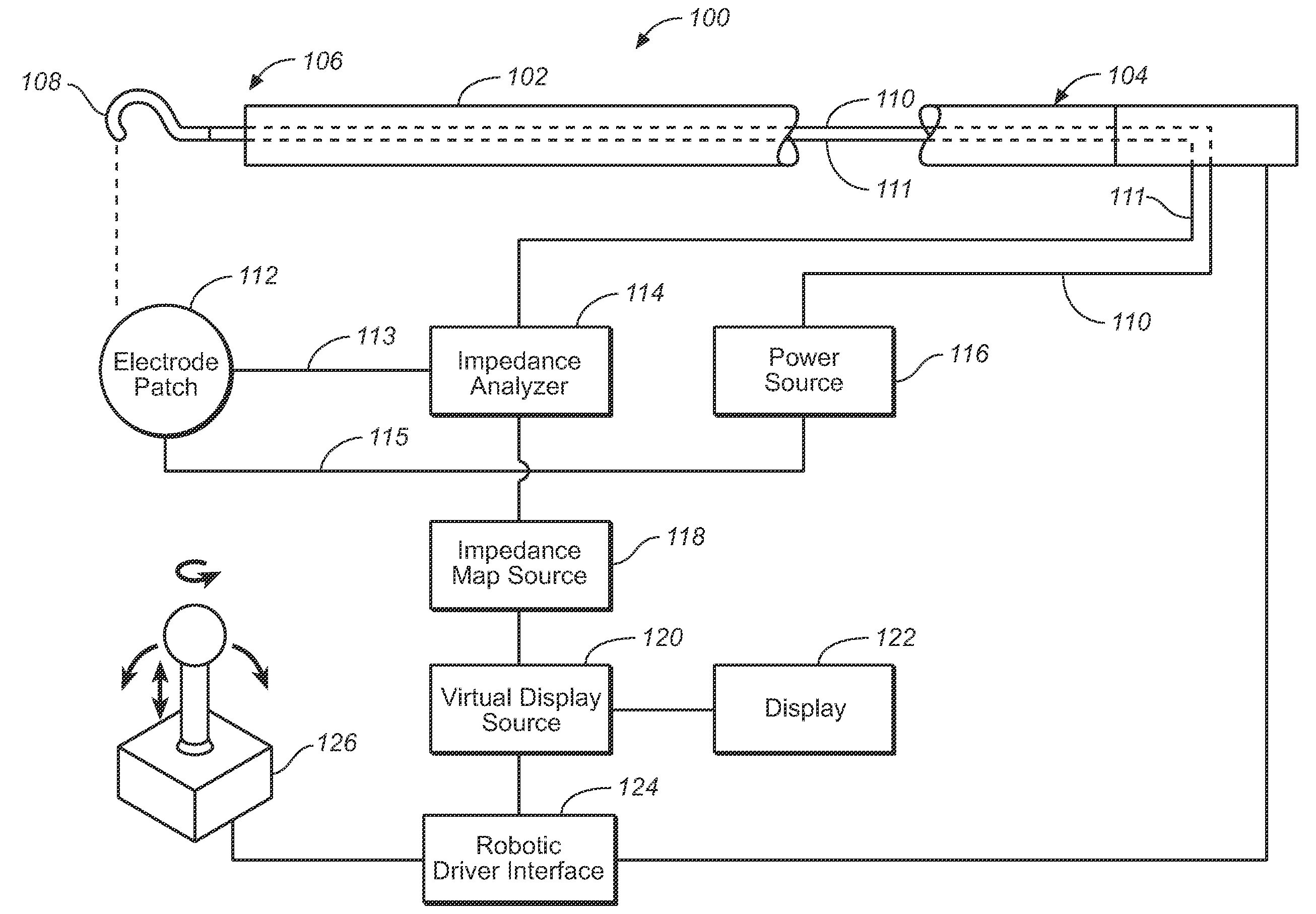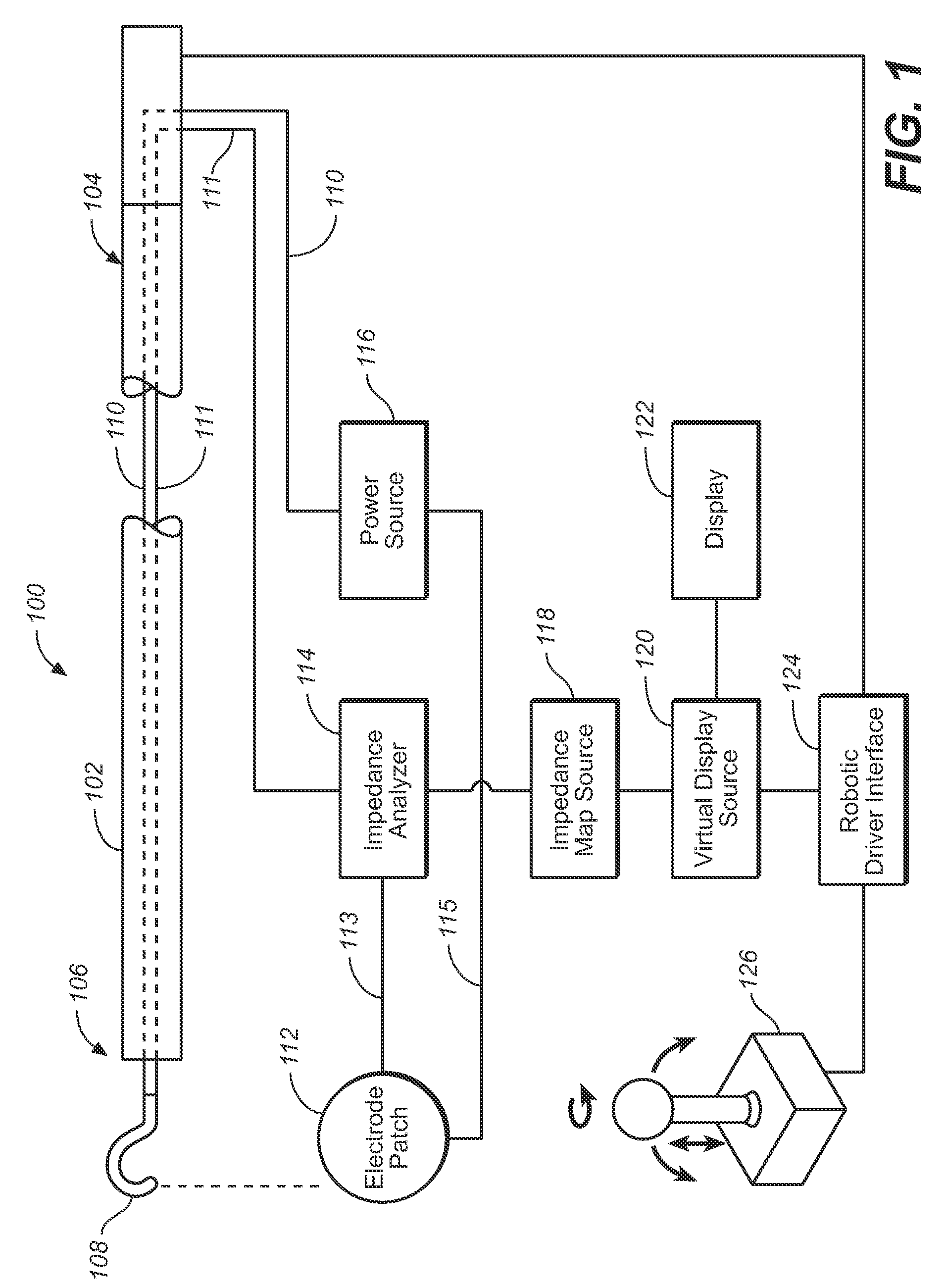Robotic Fenestration Device Having Impedance Measurement
a robotic fenestration and impedance measurement technology, which is applied in the direction of prosthesis, blood vessels, catheters, etc., can solve the problems of internal bleeding, potentially life-threatening conditions, thin blood vessel walls, etc., and achieve the effect of facilitating the fenestration of endoluminal grafts
- Summary
- Abstract
- Description
- Claims
- Application Information
AI Technical Summary
Benefits of technology
Problems solved by technology
Method used
Image
Examples
Embodiment Construction
[0015]Specific embodiments are now described with reference to the figures, wherein like reference numbers indicate identical or functionally similar elements. When the terms “distal” and “proximal” are used in relation to a delivery system or a catheter system in the following description with respect to a position or direction relative to the treating clinician. “Distal” or “distally” are a position distant from or in a direction away from the clinician. “Proximal” and “proximally” are a position near or in a direction toward the clinician. However, when referring to the graft (whether in the delivery system or already implanted) the proximal end refers to the end of the graft material nearest the heart by way of blood flow path, while distal is the end farthest from the heart by way of blood flow path.
[0016]The following detailed description is merely exemplary in nature. Although the description herein is in the context of treatment of blood vessels such as the aortic, carotid, ...
PUM
 Login to View More
Login to View More Abstract
Description
Claims
Application Information
 Login to View More
Login to View More - R&D
- Intellectual Property
- Life Sciences
- Materials
- Tech Scout
- Unparalleled Data Quality
- Higher Quality Content
- 60% Fewer Hallucinations
Browse by: Latest US Patents, China's latest patents, Technical Efficacy Thesaurus, Application Domain, Technology Topic, Popular Technical Reports.
© 2025 PatSnap. All rights reserved.Legal|Privacy policy|Modern Slavery Act Transparency Statement|Sitemap|About US| Contact US: help@patsnap.com



